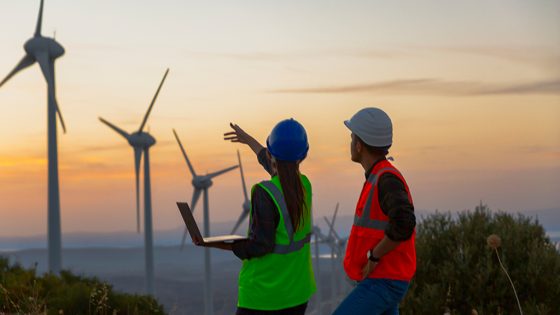The construction industry has moved closer towards meeting its net-zero ambitions but tough finances and a lack of data are holding back further progress, research has suggested.
According to the latest biennial NBS Sustainable Futures Report, nine out of 10 respondents worked on projects with sustainable outcome targets, with almost half (48 per cent) doing so at least most of the time.
Compared with the last report, published in 2022, there has been a 16 per cent increase in the proportion of organisations measuring their carbon footprint.
And the poll of 568 professionals, including UK consultants, contractors and suppliers, found that 43 per cent believed sustainability was usually or always achieved on their projects – an increase of 10 percentage points.
There was also optimism across all roles, with 89 per cent – the same percentage as in 2022 – predicting that their organisation would achieve net zero at some point.
The research was supported by Glenigan, the Chartered Institute of Building and the Royal Institute of British Architects.
But the report also revealed that cost was now the biggest barrier to lowering emissions, mainly due to the “tough economic landscape” and the need to value-engineer projects to protect margins.
It said: “The last few years have been particularly challenging, with high material price inflation and supply issues. If we are entering a period of stability with some hope of growth, then there might be more opportunity for clients to spend money on more sustainable products – even if the upfront costs are a little higher.”
Some industry respondents, cited in the report, urged manufacturers to share more details about the sustainability of their products. This was critical to meeting new sustainability reporting demands set by the government, they said.
NBS predicted further improvements would come from firms focusing on addressing embedded carbon at each stage of the build process and in the final building. This could be achieved by greater use of data, said Anya Blanchfield, a sustainability engineer and net-zero consultant at consultancy McBains.
Writing in Construction News, she said more data use would improve results throughout the build process.
Blanchfield, who is also a BREEAM assessor, said: “A more accurate way of assessing a building’s performance level would be to compare its data prior to its retrofit, and the same data after, once measures have been installed.
“The type of modelling used in EPCs [Energy Performance Certificates] can be very valuable, but there can be performance gaps between what is simulated and what actually occurs due to assumptions in modelling, poor specification at design stage or below-average installation.”
She added: “A more holistic approach would not simply look at the operational energy of a building, but would conduct an analysis that incorporated how much carbon was involved in the building works, including the embodied energy in the materials used in retrofitting, and the savings created by them.”
Blanchfield also called for a wider rethink on demolition to instead make it the default choice to adapt existing buildings where possible, which in many instances would reduce carbon emissions.
She said: “We need an industry-wide shift, with older buildings valued rather than knocked down. We have access to cutting-edge green technology and skilled contractors. The complexities of retrofitting historic buildings can be navigated and will result in a more sustainable future.”

